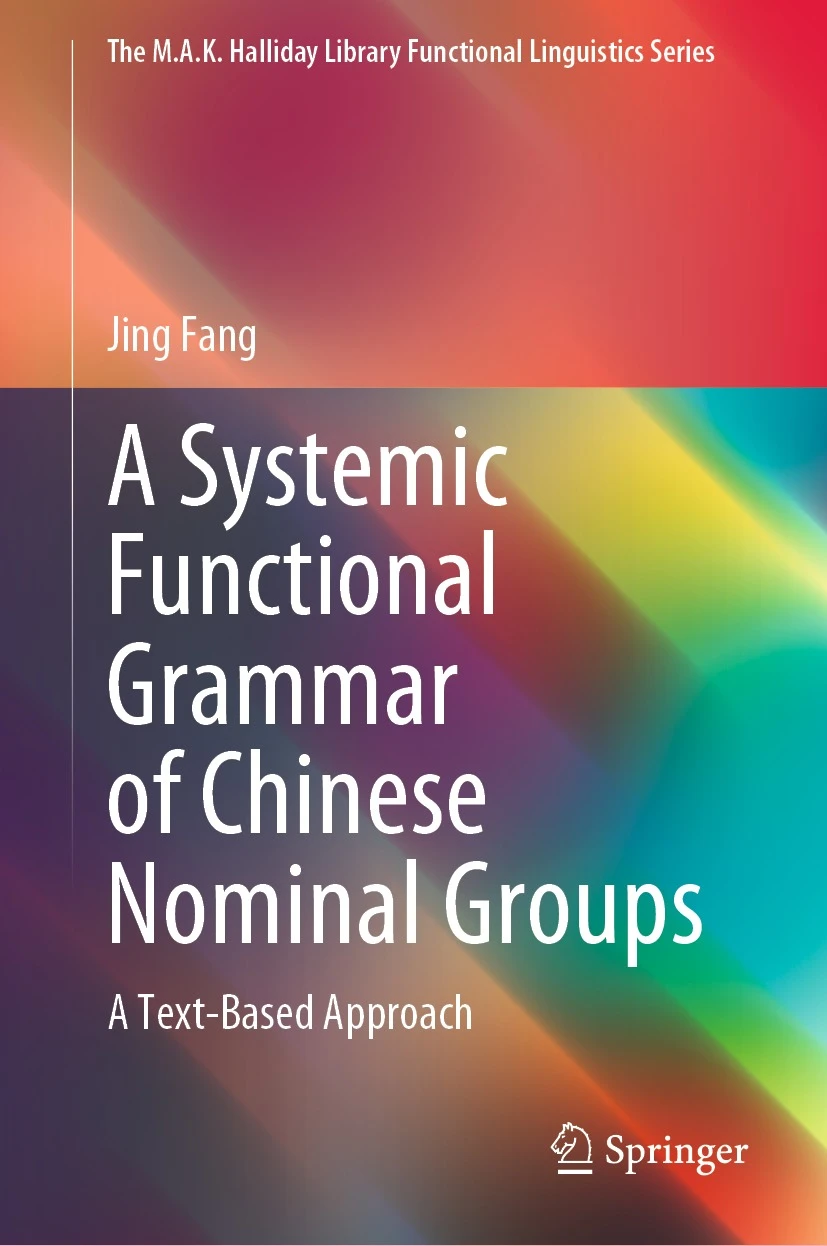A systemic functional grammar of Chinese nominal groups: a text-based approach

The observations on nominal groups presented here are based on both a working corpus of 180 texts of various types and a large referential corpus of over 16 billion tokens. With clear descriptions of the terminology used, the book presents a case study at the end of each major chapter, which demonstrates how the grammatical resources discussed can be applied to the delicate analysis of authentic texts. This monograph is more than a grammar book, for it offers a new way to engage with a text microscopically and enables readers to approach and analyse a text by focusing on grammatical units below the clause level. The book provides an accessible and valuable resource for readers who are interested in SFL-based typological description, text analysis, translation studies between English and Chinese, English–Chinese comparative linguistic studies, and Chinese language teaching and learning.
zum Buch im KatalogPlus
zum Buch auf der Verlags-Website
Syntax and Morphology of Yiddish Dialects: Findings from the Language and Culture Archive of Ashkenazic Jewry
 20th century fascism largely destroyed European Jewish cultures in their original form and distribution. Survivors brought their culture to new environments, where it was partly revitalized. Languages were also victim to this, or were abandoned in the course of assimilation and acculturation, or at least were strongly influenced by the different new contact situations. In the 1950s, when it was foreseeable that many survivors who had grown up in the old European territories would not pass on their mother tongue to their children and grandchildren, Uriel Weinreich recognized the necessity and opportunity to systematically document the language and culture of these speakers. Within the framework of his project “Language and Culture Archive of Ashkenazic Jewry” (LCAAJ), 18 interviewers collected interviews with almost 1,000 informants between 1959 and 1972 on the basis of an extensive questionnaire. The material collected within the framework of the LCAAJ is an inexhaustible fund and the best source we have on the historical Yiddish dialects of Central Europe. With the publication of the digitized copies of the written records (field notes) by Columbia Libraries in 2018 the raw data of the LCAAJ became available to the public. Between 2017 and 2022 the project “Syntax of Eastern Yiddish Dialects” (SEYD) analyzed these field notes with regard to syntactic and also morphological structures. The present volume presents a selection of these phenomena. The focus is on the empirical data as well as their embedding in a (micro)typological context. A large number of maps illustrate the spatial dimension of the grammatical variation given in the former European Yiddish dialects.
20th century fascism largely destroyed European Jewish cultures in their original form and distribution. Survivors brought their culture to new environments, where it was partly revitalized. Languages were also victim to this, or were abandoned in the course of assimilation and acculturation, or at least were strongly influenced by the different new contact situations. In the 1950s, when it was foreseeable that many survivors who had grown up in the old European territories would not pass on their mother tongue to their children and grandchildren, Uriel Weinreich recognized the necessity and opportunity to systematically document the language and culture of these speakers. Within the framework of his project “Language and Culture Archive of Ashkenazic Jewry” (LCAAJ), 18 interviewers collected interviews with almost 1,000 informants between 1959 and 1972 on the basis of an extensive questionnaire. The material collected within the framework of the LCAAJ is an inexhaustible fund and the best source we have on the historical Yiddish dialects of Central Europe. With the publication of the digitized copies of the written records (field notes) by Columbia Libraries in 2018 the raw data of the LCAAJ became available to the public. Between 2017 and 2022 the project “Syntax of Eastern Yiddish Dialects” (SEYD) analyzed these field notes with regard to syntactic and also morphological structures. The present volume presents a selection of these phenomena. The focus is on the empirical data as well as their embedding in a (micro)typological context. A large number of maps illustrate the spatial dimension of the grammatical variation given in the former European Yiddish dialects.
zum Buch im KatalogPlus
zum Buch auf der Verlags-Website
